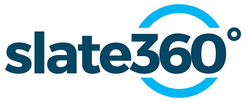As part of his official visit to the southern provinces, HM King Mohammed VI arrived on Saturday, February 6, 2016 in Dakhla coming from Laayoune.
Strategically located on the Atlantic Coast, near the border with Mauritania, Dakhla links North and Sub-Saharan Africa. The city is also beneficiary of the new development model for the southern provinces, which was launched on the occasion of the 40th anniversary of the Green March to promote the integration of these provinces in the kingdom, and reinforce the position of the Sahara as an economic hub and a bridge between Morocco and its African depth.
This new development model revolves around four pillars, namely creating a new development and employment momentum based on competitive regional poles, achieving comprehensive development and promoting the cultural dimension, promoting responsible governance, and guaranteeing sustainable development and reinforcing the national and international connectivity of the southern provinces.
In accordance with this process, HM King Mohammed VI chaired, on Monday, the ceremony to launch the development programs of Dakhla-Oued Eddahab and Guelmim-Oued Noun regions, and sign their related program contracts.
The 77-billion-dirham development model puts the citizen at the top of its priorities and is based on contract agreements between the State and the regions, which will determine the obligations of each side.
At the beginning of this ceremony, president of the Dakhla-Oued Ed-Dahab region, Ynja Khattat, made a statement before HM the King in which he stressed that the new development model of the Dakhla-Oued Ed-dahab region requires investment of about 17.75 billion dirhams, including 6.6 billion dirhams allocated by the State.
For his part, president of the Guelmim-Oued Noun region, Abderrahim Ben Bouaida, said the new development model of the Guelmim-Oued Noun region requires investment of about 11.93 billion dirhams, including 5.5 billion dirhams allocated by the State.
HM King Mohammed VI subsequently chaired the signing ceremony of the two program contracts (2016-2021) between the State and the regions of Dhaka-Oued Ed-dahab and Guelmim-Oued Noun.
In addition, HM King Mohammed VI inaugurated, on Monday at the port of Dakhla, a new fish market, a further illustration of the royal solicitude towards the region and His ambition to make it a development pole.
The 26-million-dirham market, part of the implementation of the national Halieutis strategy which provides for organizing the traditional and coastal fishing industry in Morocco, is in line with the development momentum in the southern city of Dakhla.
Built on an area of 3,070 square meters, the new market includes a refrigerated exhibition and sales space, a reception hangar for the identification and weighing of products, an allotment and dispatch hangar, a cold room, a counter to grade the industrial fish, a veterinary office, administrative and technical facilities, as well as a parking.
This new marketing infrastructure aims to improve the quality, fluidity and transparency of business transactions and develop fishing related activities in the region.
HM King Mohammed VI, Supreme Commander and Chief of General Staff of the Royal Armed Forces (FAR), also inaugurated at the Port of Dakhla, the "Oued Massa" seawater desalination vessel.
Newly acquired by the Royal Navy from the Dutch shipyard "DAMEN SCHELDE NAVAL SHIPBUILDING", this vessel will produce drinking water for the benefit of areas facing water shortage and lack port infrastructure.
The acquisition of this vessel was decided by HM the King, Supreme Commander and Chief of General Staff of the FAR, as a result of the floods that ravaged the southern provinces of the Kingdom in 2014.
With a production capacity of 1,500 m3 per day, the new vessel will supply drinking water to 75,000 people at a rate of 20 liters per day per capita.





